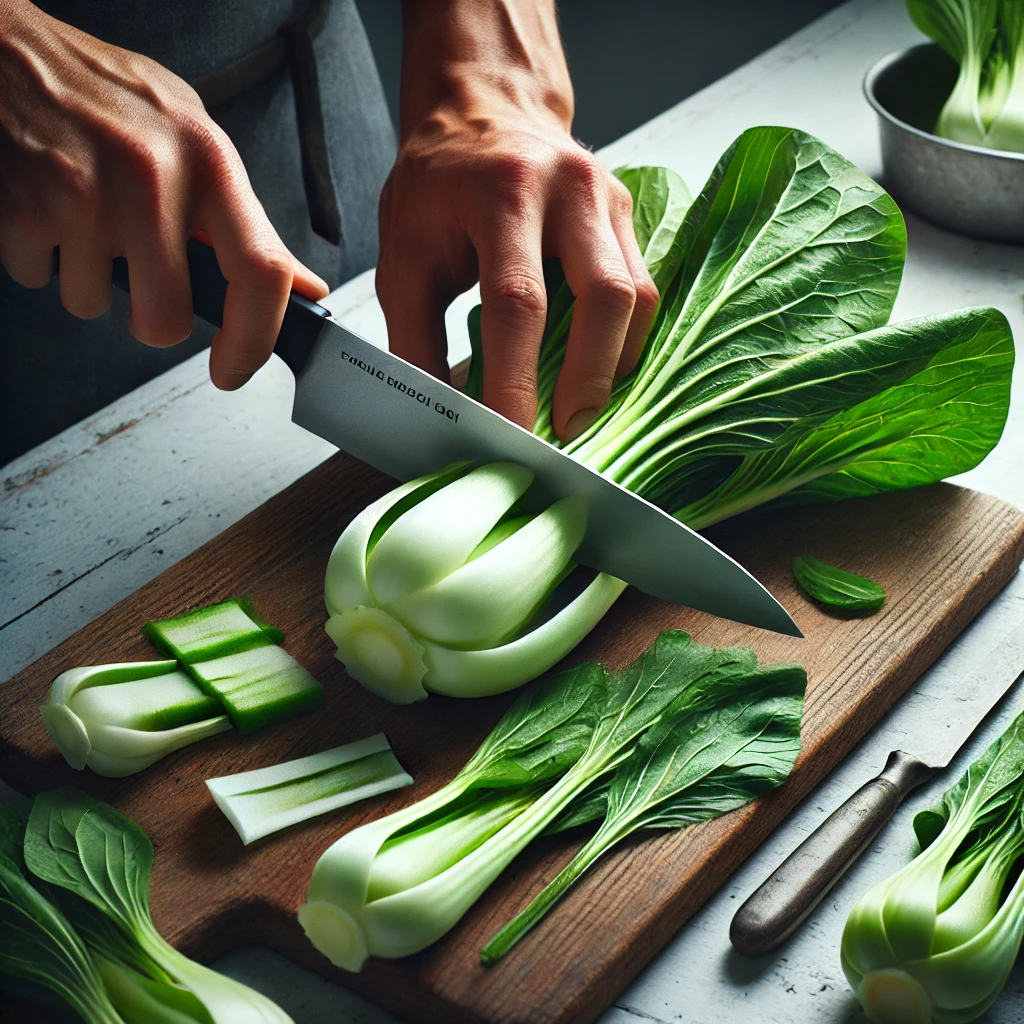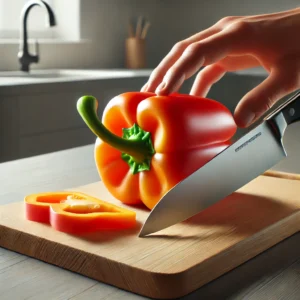Pak choi, also known as bok choy, is a versatile leafy green that’s a staple in many Asian dishes. Whether you’re preparing a stir fry, ramen, or soup, knowing how to cut pak choi properly can make all the difference in your dish’s presentation and flavor. With just a few simple steps, you’ll have beautifully prepared pak choi ready to elevate your meals.
Cutting pak choi might seem tricky at first, but it’s surprisingly easy once you get the hang of it. Whether you’re trimming for stir fry or chopping for a hearty soup, this guide will walk you through the basics. Let’s dive in and learn how to cut pak choi like a pro!

How to Cut Pak Choi Steps:
- Rinse the Pak Choi
Start by rinsing the pak choi thoroughly under cold running water. Make sure to remove any dirt or debris hidden between the leaves. - Trim the Base
Place the pak choi on a cutting board and use a sharp knife to cut off the base, separating the leaves. This makes it easier to clean and cut further. - Separate the Leaves
Once the base is removed, gently separate the leaves. If you’re using baby pak choi, you can keep the leaves intact or cut them in half lengthwise. - Cut into Desired Sizes
For stir fry or soup, chop the leaves and stems into bite-sized pieces. If you’re making ramen, you might prefer longer strips for a more decorative look. - Slice the Stems
The stems are firmer than the leaves and take slightly longer to cook. Slice them into thin pieces to ensure even cooking. - Chop the Leaves
Stack the leaves and chop them into smaller pieces or ribbons, depending on your recipe. The leaves cook quickly and add a tender texture to your dish. - Optional: Trim for Presentation
If you’re cooking baby pak choi whole, trim the root ends neatly and keep the leaves attached for a beautiful presentation in soups or ramen. - Ready to Cook
Your pak choi is now perfectly prepared and ready to be used in your stir fry, soup, ramen, or any other recipe!
Tips and Tricks for Cutting Pak Choi
- Use a Sharp Knife
A sharp knife makes cutting pak choi easier and ensures clean cuts without bruising the leaves or stems. - Clean Thoroughly
Always rinse pak choi under cold water to remove dirt and grit, especially from the base where debris can accumulate. - Separate Stems and Leaves
Since stems take longer to cook than leaves, keep them separate when cutting. This helps you cook each part evenly. - Cut to Match the Dish
For stir fry, chop pak choi into smaller, uniform pieces for quick cooking. For soups or ramen, longer cuts add texture and visual appeal. - Don’t Overcut Baby Pak Choi
If using baby pak choi, keep the leaves and stems intact or cut them in half lengthwise for a more attractive presentation. - Save the Trimmings
The trimmed base and tough outer leaves can be used to make vegetable stock, minimizing waste. - Dry Before Cooking
After rinsing, pat the pak choi dry with a clean towel to prevent excess water from affecting your dish’s texture and flavor. - Experiment with Cuts
For different dishes, try slicing pak choi diagonally, chopping into ribbons, or leaving it whole to suit your recipe.
What part of pak choi do you use?
You can use both the green leaves and the white stems of pak choi. The stems are crunchy and the leaves are tender, making them perfect for a variety of dishes.
How do I cut pak choi?
Rinse thoroughly, trim the base, separate the leaves, and slice the stems and leaves into your desired size depending on your recipe.
Is pak choi meant to be crunchy?
Yes, the white stems of pak choi are naturally crunchy, adding a delightful texture to dishes like stir fry and salads.
Do you eat the white part of pak choi?
Absolutely! The white stems are edible, crisp, and full of nutrients, making them a key part of any pak choi dish.
Can pak choi be eaten raw?
Yes, pak choi can be eaten raw in salads or slaws. Its mild, slightly peppery flavor adds a refreshing crunch to raw dishes.
Is pak choy a superfood?
Yes, pak choi is considered a superfood due to its high nutrient content, including vitamins A, C, and K, calcium, and antioxidants.
How to prepare a pak choi?
Rinse thoroughly to remove dirt, trim the base, and cut it into desired sizes for stir fry, soups, or salads.
Should you remove flowers from pak choi?
Yes, remove flowers as they can indicate the plant is bolting, which may result in a slightly bitter taste.
How to tell if bok choy is bad?
Bad bok choy will have wilted leaves, slimy stems, or an unpleasant odor. Fresh pak choi should be firm and vibrant in color.
Learning how to cut pak choi is simple and rewarding, making it easy to prepare this versatile vegetable for any dish. Whether you’re adding it to a stir fry, ramen, or soup, properly cutting and preparing pak choi enhances both the flavor and presentation of your meals. With these tips and tricks, you’ll be able to handle pak choi like a pro and enjoy its crisp stems and tender leaves in a variety of recipes. Happy cooking!
You can also check How to Cut Spring Onions.

